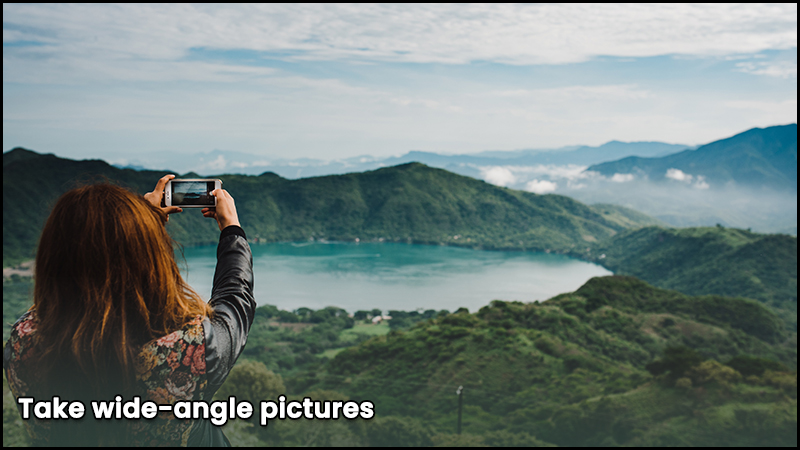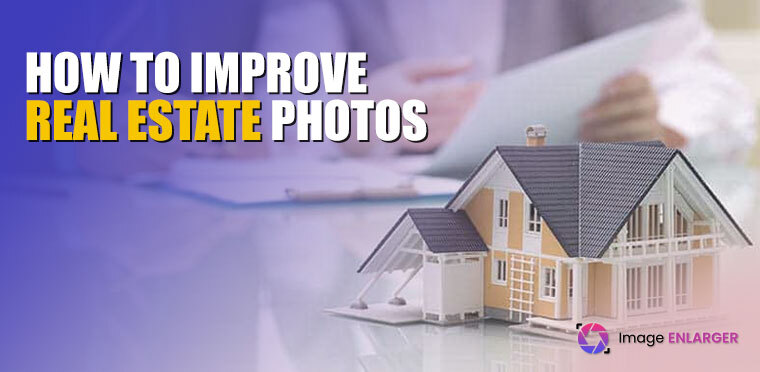Beautiful and expertly taken photos are crucial in the real estate industry. According to surveys, real estate brokers that use excellent and expert images sell properties 32% faster. Here, we’re not referring to images captured using a typical smartphone because those won’t be able to draw in customers. It’s crucial to provide a variety of high-quality photographs so that potential buyers may assess the actual appearance of the property and even determine from real estate photos whether it’s the house or apartment they need.
A real estate photographer’s annual pay nowadays typically falls between $40,000 and $62,000. Interior photography and exterior photography are both used in real estate photography. You can highlight a property’s benefits to prospective customers by using in-depth, high-quality real estate images.
How to improve Photography?
There is no doubt that practicing regularly is the best method to develop as a professional photographer. However, practice alone won’t go you very far; you also need a solid knowledge base to lead you in the right direction. a body of knowledge that expands on photography’s principles. Once you have that information, you may observe and learn from people from various walks of life to improve your photographic techniques. Don’t limit yourself to a single specialty; be inventive.
15 Tips to improve real estate photos:
1. Insurance for photographers:

Photographers frequently worry about their own equipment getting dirty or damaged, but what about objects in the house or even people strolling close to your equipment? Do you have “Photographers Insurance”? If something is damaged or someone gets hurt because of your equipment, what happens?
It didn’t really consider this, but after researching it for this essay, you believe That will need it as they begin building million-dollar yachts and homes.
2. Set Fire to Memory:

Act as though you have a digital camera now. Shoot as many pictures as necessary until you are confident that you have “Something” you can provide the customer. The worst-case situation is that you have to delete a tonne of images, but that will always be simpler than having to produce one that you didn’t take! In the beginning, you should experiment and practice by using new methods at work and even at home when you’re not working. But keep in mind that you still need to offer a product if you are learning on the job.
3. Keep trying; you will find employment:

Getting your first few real estate picture shoots could take some time, depending on who you know in the business and who you don’t. To gain expertise and build a portfolio, you might even begin by photographing homes for free. If you do, you’ll be shocked at how difficult it is to find clients. The truth is that rather than spending money on a good photographer they don’t know, many will choose to hire a lousy photographer they know. You will have to get over this obstacle, and even though you might think the phone won’t call, it usually does at certain moments.
4. Take wide-angle pictures:

Wide-angle photographs emphasize your main points while adding depth to your property. Additionally, if you’re photographing a huge area, you might require a greater focus, and the easiest way to do it is with a wide angle. “Decreasing the aperture diameter further increases depth of field, generating a pan-focus image centered on the whole range,” claim the professionals at Ricoh Imaging. Another advantage of using a wide-angle lens for photography is that you have more options. Some smartphones have a wide-angle setting, but if you want something a little more, you may buy a lens that you can put on top of your smartphone camera to get the ideal wide-angle photo.
5. Adjusting Wide Angle Lens Distortion:

When using a wide-angle lens, extreme care must be taken to maintain a level of posture and a safe distance. As you can see in the image on the right, wide-angle lenses, particularly the more affordable models, are quite sensitive to close distances and vertical lines.
6. Take a lot of Pictures:

Thankfully, Photoshop and Lightroom can fix most distortions even if you are slightly off-center on location, but you will lose some of your photographs in the process. Before relying solely on post-processing, keep this in mind. Most real estate brokers don’t have a problem with this kind of thing, but interior designers won’t be happy.
Fix Color Temperature: Using various lighting sources will result in photos with variable color temperatures. For these various hues to be corrected, editing software is required. In the end, you want the lighting to appear uniform in terms of hue and distribution. One of the most essential alterations to do in real estate photography is color temperature.
The Adjustment Brush in Lightroom does a great job of balancing out different color temperatures brought on by insufficient lighting. You can modify the feathering, brush size, and strength for flawless blending.
7. Decide to buy:

Think about what a buyer would like to see and which features of the house would appeal to them the most. It can be useful from time to time to stroll through the house and take pictures of it as a potential buyer would. By doing this, you may assist prospective purchasers to imagine the room and give the photos a sense of order.
8. Use a drone to get a bird’s eye view:

Using drones, contemporary real estate photography has truly achieved new heights. Drones can access a distinct viewpoint that was previously impractical or extraordinarily expensive. The height will allow for a view of the entire land, including its boundaries.
When the location and surroundings of the home are key selling points, drone real estate photography is frequently used. With the help of these real estate photos, you can display the breathtaking surroundings while also including the property.
9. Before launching, make a tour of the house:

Every house is unique. Getting a sense of the environment before picking up the camera will help you decide how to capture it. Make a mental note of the finest perspectives and any tiny objects you might need to move. You can even request the homeowner to move something by doing this. Keep in mind that the goal of real estate photography is to enhance the appearance of the structure, not the interior as it is.
10. Use virtual staging:

Home staging is a well-liked strategy for ensuring that a real estate listing is presented in the most appealing way possible. Virtual staging is yet another essential tool to improve the real estate photos of the home. For a fraction of the time and cost of conventional staging, virtual staging may digitally furnish vacant buildings or remove and replace existing furnishings in a property.
Although there are numerous top-notch virtual staging businesses, BoxBrownie is one of the most well-known services. With a turnaround time of just 48 hours, BoxBrownie offers virtual staging for both residential and commercial properties.
11. Boost the Color:

Professionals in real estate and home staging frequently advise utilizing neutral color schemes to appeal to the greatest number of prospective buyers. That doesn’t imply, however, that the house should be devoid of any color. Small splashes of color actually make a big difference in real estate photos. Add a few colorful throw cushions or a vibrant arrangement of flowers to the rooms you are photographing if they lack color to make the image stand out.
12. Make use of editing presets:

Using preset editing choices is another useful shortcut for real estate agents who are still learning how to take real estate images. Presets automatically improve the appearance of images by combining various lighting, temperature, and white balance adjustments.
13. Describe the Best Qualities:

Customers may be encouraged to purchase a home as soon as feasible by a specific or distinctive feature of this one. Therefore, as a real estate photographer, you must emphasize certain unique and imaginative elements of the home and minimize some negative aspects.
Ask the owner or stroll through the house and take a few test photographs to discover the best one if you are unsure of the ideal viewpoint and characteristics of the place.
14. How to Decorate Vacant Spaces to Look Attractive:

As a real estate photographer, you have numerous opportunities to capture various types of properties, including both gorgeous and unsightly houses. Photographers frequently capture crowded furniture homes in their images. However, given the abundance of virtual staging providers, it might change over time. A room that is empty can be captured on camera. After that, customers can utilize the virtual service to decorate that room with furniture they adore. It will probably outperform your rivals, in my opinion.
15. Based on the time of day, set your rates:

When compared to shooting in the late afternoon with natural light, photography at sunset involves more preparation and equipment. Additionally, processing golden hour photos frequently take longer than editing a plain daytime shot. As a photographer, you should arrange your charges so that, depending on the time of day you are shooting, your extra equipment and time are covered. Give your customers a choice between a daytime and a golden hour shot so they may choose how much they are ready to spend.
Conclusion:
The secret to successful real estate photography is taking flawless pictures. Following the real estate photography advice provided here is the best course of action for giving your consumers the best real estate photos of a property’s inside and outside.
